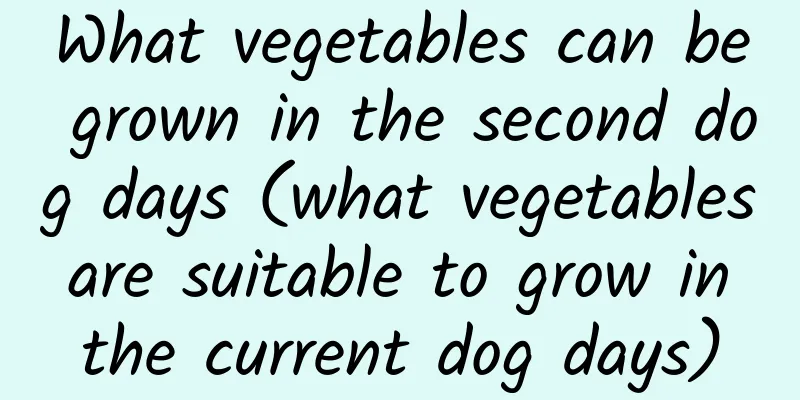High-yield cultivation technology of pepper

|
Chili peppers can not only be eaten fresh, but can also be used as a common seasoning. Their spicy and stimulating taste is loved by many ordinary people. They are an indispensable side dish in dining. The demand for chili peppers in the market is still very large. Let’s learn about the high-yield cultivation techniques of peppers. 1. Choose the variety When choosing a pepper variety, you should consider local climatic conditions. At the same time, farmers also need to consider the taste preferences of regional consumers. For example, Jiangsu, Fujian, Zhejiang and other places prefer non-spicy lantern peppers, while Chongqing, Guangxi, Hunan and other regions prefer spicy varieties such as millet peppers, bullet peppers, and bright peppers. 2. Processing seeds Before sowing, it is necessary to treat the seeds to eliminate the germs, viruses and pests on the seed surface, activate seed vitality and improve germination rate. When the temperature is stable at above 12°C, air the seeds for 48 hours, turning them over every 2 to 3 hours to ensure even heating. Afterwards, you can use the warm water seed soaking method and use seed dressing agent to coat the seeds for sowing. The seed dressing agent contains fungicides , insecticides and plant growth regulators , which help kill pests inside and outside the seeds and provide nutrients to promote germination. If chemical treatment is used, the seeds need to be thoroughly rinsed 2 to 3 times before sowing, then soaked in warm water at 25 to 30°C for 8 to 12 hours and then sown. 3. Seedling cultivation method Pepper seeds are sensitive to temperature and germinate best in an environment of 23 to 30°C. Seedlings can be raised in floating trays or in small plastic arch sheds. Choose sunny land to ensure convenient drainage and irrigation, and avoid continuous planting of Solanaceae crops. Floating tray seedling cultivation is to float the foam plug tray filled with seedling substrate in the water and sow seeds directly without the need for soil, thus reducing insect pests. 4. Planting seeds Before raising seedlings, the land is plowed in July and August, disinfected with high temperature, and the soil is broken up and leveled. The width of the seedbed is controlled at 1.5 to 1.7 meters. It is sprayed with human and animal feces and covered with a film to prevent nutrient loss. If the insect pest is serious, you can spray pesticides such as polychlorinated fungus and potassium permanganate. When sowing, spread the treated seeds evenly on the seedbed, cover with fine soil or old coal ash about 1 cm thick, keep moist, and finally cover with plastic film, build a small arch shed, and ventilate in time after the seeds germinate. 5. Field management Field management is crucial to high quality and high yield of pepper. Attention should be paid to temperature control during seedling management. Seedlings should emerge within one week after sowing. After emergence, sprinkle fine soil to retain moisture. When thinning and transplanting seedlings, remove the weak seedlings and leave the strong seedlings. When hardening the seedlings, ventilate in the morning and evening to enhance their resistance to cold. If the seedlings grow too fast, you can spray dwarfing agent to control their growth and prevent them from lodging. If the leaves turn yellow or have insect pests, spray pesticides in time for prevention and control. Choose healthy seedlings when transplanting and determine the plant spacing and row spacing based on the characteristics of the variety. Early-maturing varieties can be planted densely, while late-maturing varieties require appropriate spacing. After transplanting, it is necessary to cultivate and weed, loosen the soil, remove weeds, and cultivate the soil to improve the resistance to lodging. Water and fertilizer management are the key factors affecting pepper yield and quality. Peppers have different requirements for water and fertilizer at different growth stages, and need to be adjusted according to actual conditions. Appropriate amounts of fertilizer should be applied during the seedling stage, nitrogen fertilizer should be increased from the bud stage to the early flowering stage, and phosphorus and potassium fertilizers should be increased from the peak flowering stage to the maturity stage. Peppers like warmth and fertilizer, but need to avoid high temperatures, too much rain and excessive fertilization. Pruning and shaping are carried out from the budding stage to the early flowering stage, removing the side branches at the base, retaining the main trunk and 2 to 3 side branches, improving permeability, and promoting the enlargement of the main branches and fruits. Intertillage and weeding promote the growth of new shoots. In short, pepper cultivation techniques and field management measures need to be adjusted according to local climate conditions to ensure the quality and yield of peppers.
|
<<: Tips for high-yield grape planting
>>: How to manage peanuts to achieve high yield?
Recommend
Several common problems in tulip cultivation
How to store tulip bulbs If you do not need to co...
What fertilizer to use for kiwi fruit
If kiwifruit is fertilized too late and the tempe...
Reproduction of Rhododendron gaoyueensis
Cutting propagation This method of propagation is...
Where do tree seeds come from?
Where do tree seeds come from? If a tree bears fr...
Is Begonia easy to grow?
1. Moisture When caring for crabapples, you can w...
How to grow ginseng banyan bonsai, ginseng banyan bonsai pictures
1. How to grow a ginseng banyan bonsai Soil: The ...
The immortal sunflower, a branch can burst the wash basin, there are 10 varieties you have never seen!
Sunflower Varieties Nowadays, sunflowers are not ...
What soil is suitable for growing carnations?
Carnation soil Carnations like alkaline soil, the...
What are the cultivation methods and precautions for jasmine?
Cultivation method of jasmine Forsythia likes an ...
Cultivation and maintenance of imperial jade
Cultivation and maintenance methods of Emperor Ja...
How to fertilize and water daffodils
The plant's requirements for water and fertil...
What kind of soil is suitable for growing green radish?
1. Soil requirements The requirements for the soi...
Cultivation methods and precautions of false epiphyllum
1. Soil The false night-blooming cereus is suitab...
What are the cultivation methods and precautions of small-leafed green radish
Introduction of small leaf green radish The small...
Will the green ingot bloom?
Will the green ingot bloom? Although many flower ...









